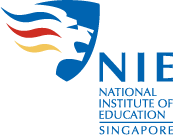An exchange programme can do wonders to surface hidden strengths. Ms Tanti Nur Hidayu and Mr Goh Aik Chuan, two final-year Visual and Performing Arts majors, recount their recent exchange programme in Japan.
They were among 14 lucky Visual and Performing Arts (VPA) students to join NIE’s first art and culture exchange programme to Japan. But as Hidayu and Aik Chuan can attest, there would be “no free lunch” even for a trip that was generously made possible under Japan’s JENESYS programme. JENESYS is an initiative to promote mutual understanding and friendship between Singaporean and Japanese youths.
“We were mainly in Tokoname city in the Aichi Prefecture to study the history and techniques of Japanese ceramic art,” explained Aik Chuan. The trip, which took place from 4 to 11 December 2018, was largely the suggestion of NIE alumnus Dr Iskandar Jalil, Singapore’s Master Potter and Cultural Medallion winner, who has close ties with the ceramics department at the Tokoname Tounomori Museum. Hidayu added, “My final year project involves intricate ceramic sculpting techniques, so I was really looking forward to this trip.” | Read More |
As it turns out, the 14 participants were selected based on their essay submissions to the VPA academic group. The opportunity was open to all NIE VPA students pursuing diploma, degree and post-graduate programmes.
Aik Chuan revealed, “It was my first time in Japan, so there were many things that struck me about this beautiful country. I really admire the Japanese for their discipline – they take punctuality very seriously. Being Singaporeans, we think a 5-minute grace period is quite acceptable for latecomers. That does not apply in Japan. There was an occasion where we arrived slightly late. That created an awkward tension, even though our hosts were too polite to show it.”
For Hidayu, the homestay experience was the high point of JENESYS. “My hosts have never had a guest who wears a tudung. They were very curious about Malay culture, and had lots of questions about Muslim customs and practices. I always thought that Japan’s industrious culture would get in the way of quality family time. I was wrong. In the countryside, it is common to find close-knit multi-generation families living on the same plot of land. As for my hosts, they would fish their own seafood and farm their own produce. Even the delicious yoghurts were homemade. That left a deep impression during my stay,” she reflected.
Even the language barrier is no longer insurmountable. Aik Chuan said, “We were at Chukyo University in Nagoya to interact with law students, and to draw on our respective backgrounds to develop ideas on mitigating global warming.” Hidayu added, “Our counterparts could read in English, but they were unable to converse. So all thanks to Google Translate, we managed to come up with some sensible presentations at the end of our dialogue. Nothing’s too hard if we put our hearts to it!”
Clearly, there was more in store besides the cultural immersion and sightseeing. According to Aik Chuan, participants had to close ranks and discuss their presentations on the lessons and takeaways. “I can be quite opinionated, but to be an effective facilitator, I had to learn to listen to everyone’s ideas and views. I brought this skill set with me when I was tasked to curate the JENESYS 2018 Exhibition, a showcase of our learning experience. From procuring the ceramic clays for our exhibits, to coordinating with participants who have already graduated from NIE, the role was trickier than I thought. Without the trip I wouldn’t have had the chance to step up such challenges and to produce an exhibition like this,” he said.
Hidayu too, felt she has grown as a teacher in the making. “I’m not really the sort who enjoys the limelight, so imagine my surprise when I had to choreograph a farewell performance at the last minute on behalf of the Singaporeans. I didn’t really know my travel mates well at first, but as teachers, we die-die must learn to conquer our fears and work as a team to achieve great results. In the end, we put up an original rendition of the dikir barat (a Malay choral style involving singing, poetry and synchronised clapping) and incorporated our official languages and familiar melodies like Chan Mali Chan. Everyone participated actively, and our Japanese hosts were highly entertained!” she reported with great delight.





